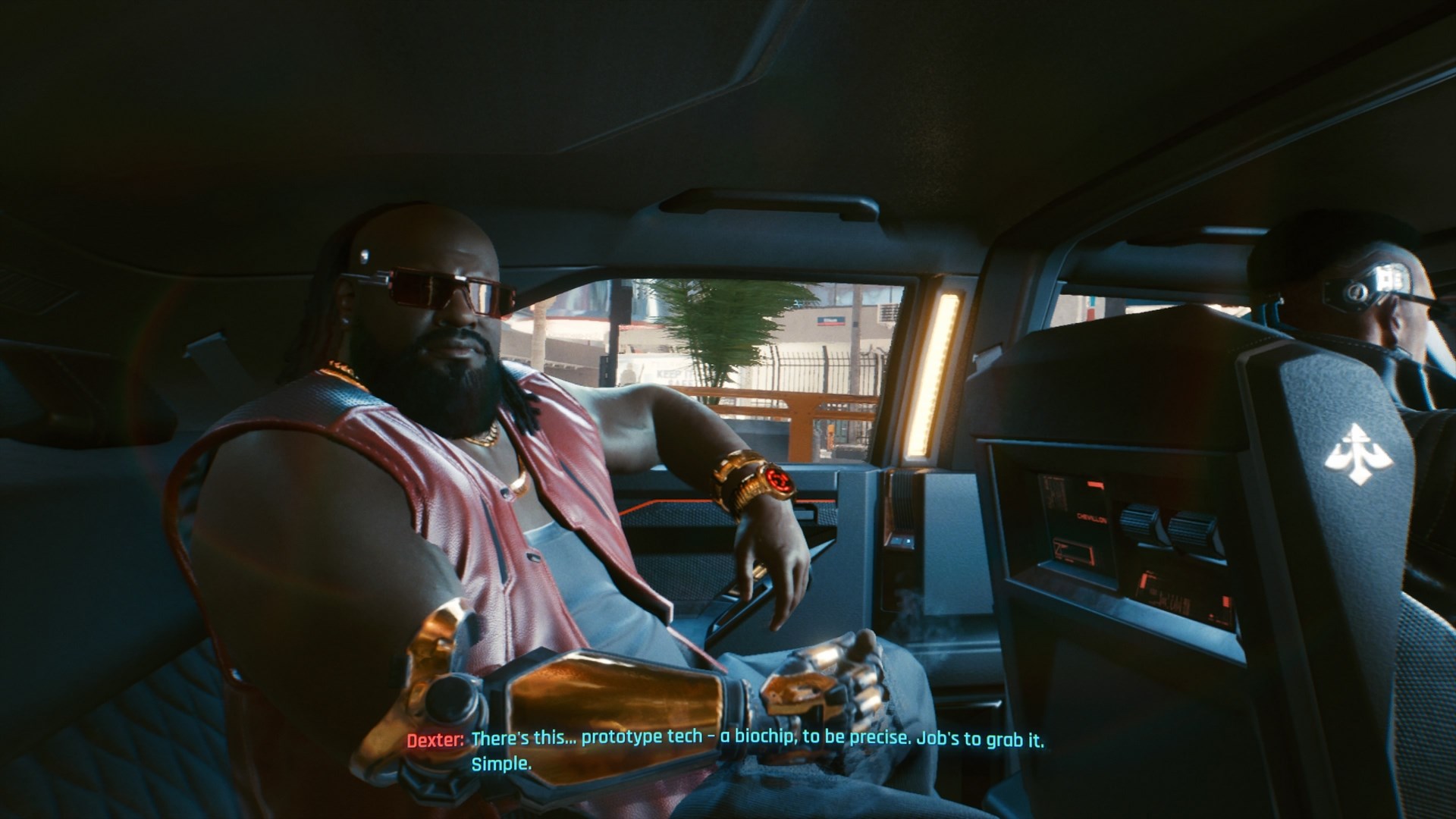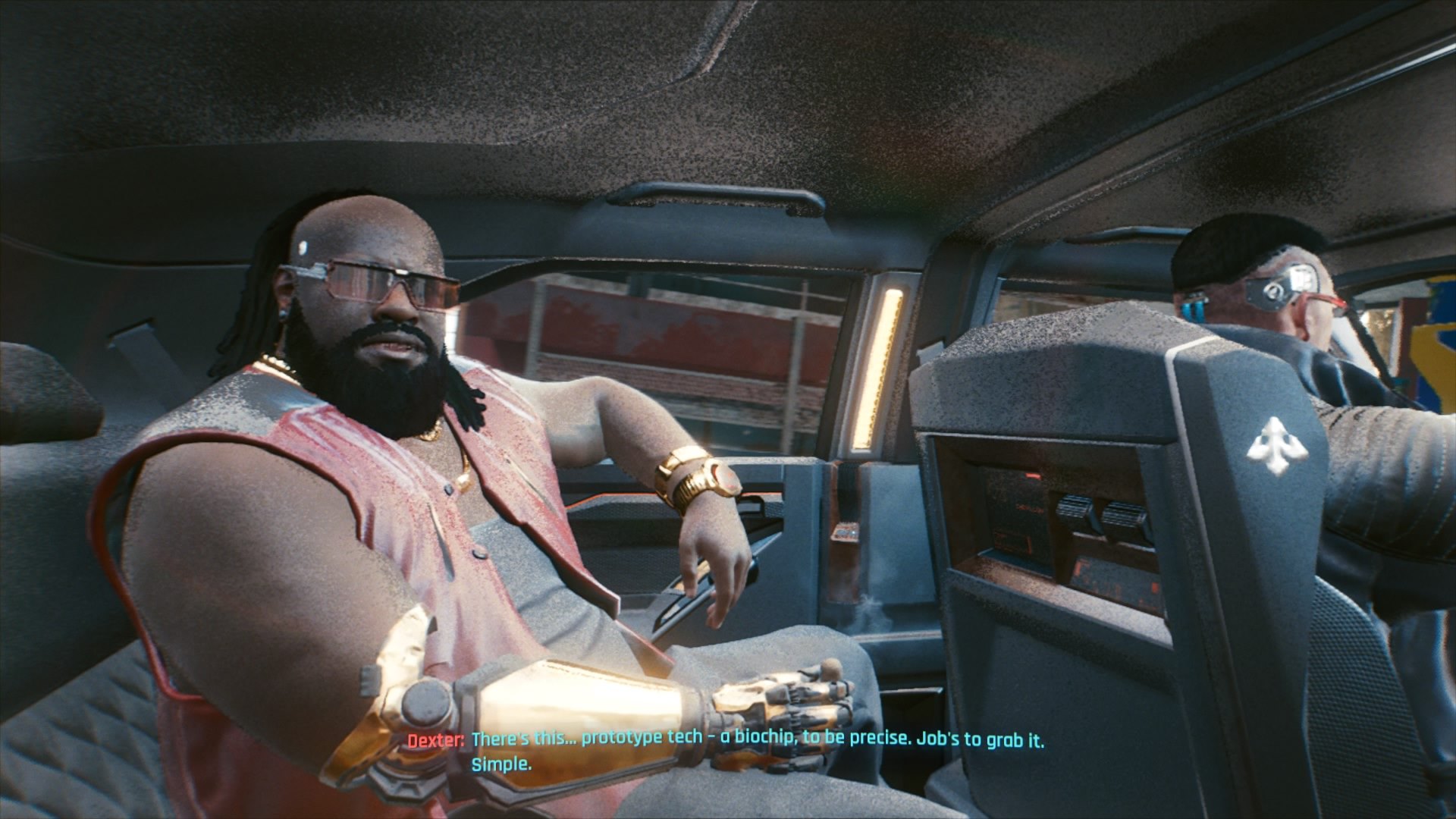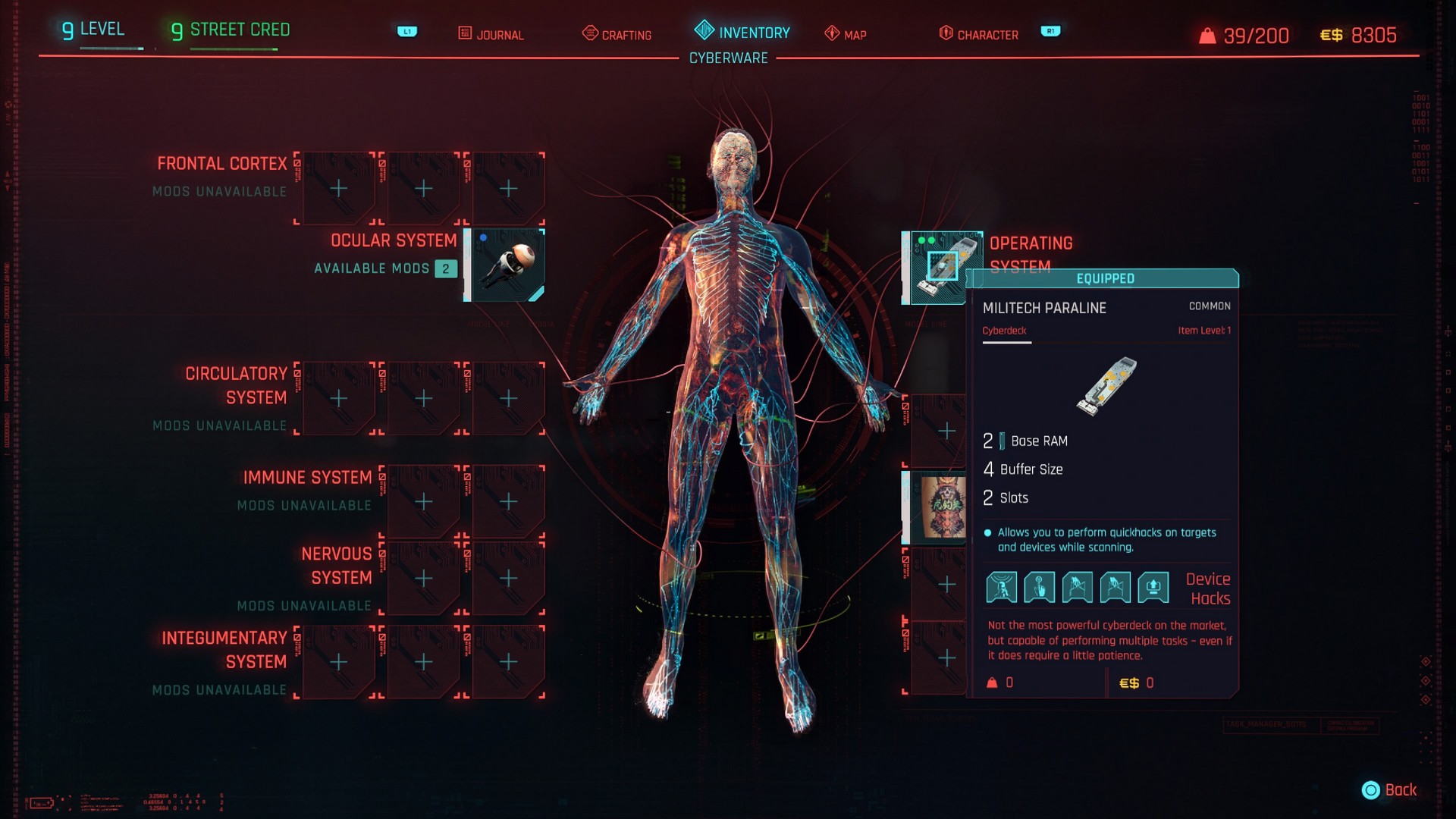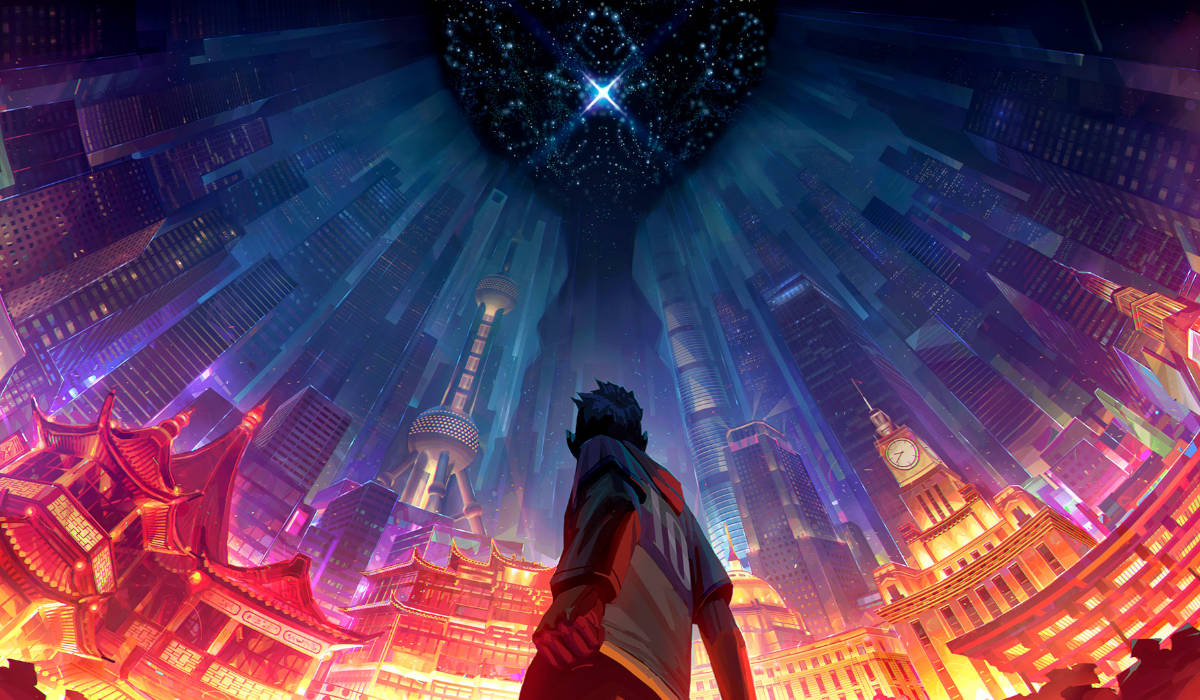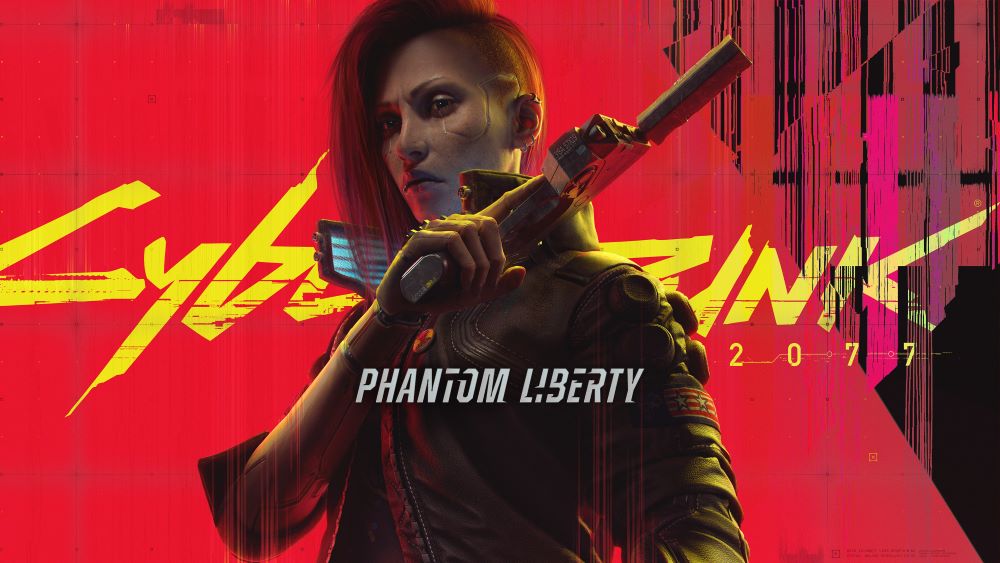Review: Cyberpunk 2077 – Too Big To Fail
Cyberpunk 2077‘s marketing machine manufactured an almost immeasurable level of hype leading to the promised launch of their title first in April 2020, then to September, then to November 19th, and then with a final last minute delay to December 10th, 2020. Fans and eager enthusiasts alike reacted either violently or with nonchalance, but instead of slowing down, CDPR continued to double down on their efforts to keep the game relevant.
Personally, my excitement for this game waned as the endless cycle of Night City Wire episodes ran out of content to keep us excited leading to the delayed November launch. Were there any surprises left to show for the massive first person futuristic RPG? By episode three of Night City Wire, they were already grasping at straws to show us something meaningful when all we really wanted was to see a final release.

The premise of the game, if it hasn’t stuck to your head by now, is that you play the role of V, a mercenary who walked into a failed heist and was able to retrieve a biosynthetic chip that is said to grant immortality. Attacked by their employers, V activates said chip and accesses the ghost of Johnny Silverhand (Keanu Reeves), a legendary rebel who flatlined 57 years prior. Now the unlikely duo make a name for themselves in the cutthroat badlands surrounding its main metropolis – Night City.
Finally being able to play it, is the game worth the hype and the almost seven year wait? Cyberpunk 2077, surprise me.
Is This It?
My biggest mistake when I started Cyberpunk 2077 was to choose the Corpo class on the PS4 instead of the PS5 and the Nomad class on the PS5 instead of the PS4. Gameplay-wise, choosing your Lifepath (and genitals) at the start of the game grants you with a quick 15-minute prologue that introduces your character into the world. It’s akin to Dragon Age: Origins, where you start off your character in your home world and then instead of the Grey Wardens paying a visit, it’s Jackie Welles.
Every IP has two first impressions: The first is when you watch a trailer or gameplay footage that attracts you to the game. The second first impression is when you finally play the game. If you are going to play as a Corpo, you do get thrown into the high stakes cutthroat corporate world where you get to see the splendor and majesty of Night City. The problem is, instead of a beautiful skyline, all I got was a smudged background, like a finger painting coming to life. That’s not a great “second” first impression.
Without giving too much away, the experience they made for you was taking out your flying car seen in iconic cyberpunk films like Blade Runner and cult classics like Johnny Mnemonic. You go for a bit of joyride around Night City in full view. When the image finally came to light, there was film grain effect seen in a late 70s, early 80s sci-fi film. It was a missed opportunity because of the washed out texture.
When my PS5 completed the download, I started with a Nomad prologue and on this I was expecting an opening akin to Mad Max: Fury Road or at least the original Mad Max. Yet, it felt like I was doing a play through of Grand Theft Auto V meets Rage 2. It wasn’t pretty, but the visuals were far smoother than a PS4. That is when I realized, I got the two mixed up. I avoided watching previews and first impressions to get a fresh take on the game, and sadly this is what I received.
Playing this on the PS4 was what you could call a mistake, because I see what CD Projekt Red want to give players and it is indeed something grand and majestic, but it is muddled by performance issues left and right that really take a toll on your impressions of the game. Frame rates go sub-20 in a lot of cases, especially when the action gets intense. Apart from horrible frame rates, texture pop in, blurry textures, delayed action triggers, and even bugged quests are on the menu.
In terms of combat, I was thrown head first into a rescue mission with Jackie and with that came with the tutorial. As far as tutorials go, it was quite basic and I experienced several bugs that prevented me from moving forward. One was that I couldn’t heal when prompted. The aiming and camera movement was choppy at the worst, especially on the PS4. Characters would clip in and out of surfaces on both versions; Jackie would phase through walls during a firefight or go through the elevator door while it’s still closed. Sometimes, Jackie won’t even appear after a mission.
My PS5 run was a lot smoother even if it was running a PS4 game with backwards compatibility. However, the original PS4, where it’s supposed to run was giving me washed out graphics and enough bugs to take me away from the experience. Was there a mistake? The game that was advertised ad nauseam was causing cognitive dissonance.
If I didn’t receive my PS5, does that mean my only entry to the game was through the PS4 version? While I have a choice on that matter, many gamers would be playing this title on a PS4, Xbox One, or a PC without the latest hardware. We simply did not receive what was advertised.
Welcome To Night City, Take Two
I’ve soon gone the route of the Playstation 5 and did not look back. If you have the means, don’t play on a PS4. Despite the level of bugs that plague it, what will really turn you off is the terrible visuals that doesn’t compare to what was advertised. It most definitely runs best on the big rig PC’s, but for console gamers, current new-gen would be your best bet. Is it playable? Sure. But why dampen an otherwise mind-blowing experience?
Managing to play the first mission on both versions, even the in-game physics have a noticeable difference when played on a current new-gen console. The DualSense Controller adds a level of heft not felt with the Dualshock. Once I entered a firefight, the first thing you notice is how well gunplay is implemented. Having played a fair number of shooters, there is a different level of gunplay that is boasted with Cyberpunk 2077.
While the quickhack capability requires a bit of learning curve, with practice you could seamlessly integrate it with the dynamic gunplay on a firefight. While there are a myriad of solutions to consider on “The Rescue”, the stealth route doesn’t necessarily add anything new to the experience. In fact, going stealth makes it seem like any other first person game in recent memory ranging from Dishonored to Dying Light. Guns ablaze is where it’s at.
On a later mission, I couldn’t avoid a direct confrontation, I was able to experience a full-on firefight and it was glorious. The design of the game combined with the power of the DualSense brought the fight to life. Each bullet ejected from both my sub-machine gun and pistols gave that simulated recoil as I defied my Maelstrom pursuers.
When I combined the quickhack ability to short circuit them, it reminded me of how my Sentinel from Mass Effect did quick work of the opposition. Now that it’s first person, you enter from an organic sight to a retro cybernetic scan UI akin to what the Terminator sees. It’s an amazing experience interacting with this fluid combat and then facing off with an iconic enemy in a power suit. I’m glad I kept up with the headshots, because once the shield for that power suit activated, it didn’t do anything.
At this point, I could see what the influencers and first look journalists were raving about. With the right hardware, combat is fantastic. My play style has always centered on exploration, but I did enjoy the fully confrontational combat on this one. The combination of seamless movement from cut scene to combat as one fluid motion adds to the “fully immersive experience”.
That was the one moment where I was awed and realized that this was part of the transition into Night City. Once you get the hang of the mechanics and info dump that was slowly fed to you, you realize how everything feels like a one-take experience. The camera does not break into a cutscene unless you’re jacking into another mainframe, go to sleep, or are put under. It simulates that life-like experience where every moment is a continuous free flow until we sleep and that’s where the “cut” happens.
Once you open your eyes to this new reality, then you notice Night City for what it truly could be. The litter sewn back alleys away from the bustling center, the interconnected high rises that house the denizens trying to become a legend in this relentless urban jungle, the eateries serving dirt cheap food as most of what’s earned goes to cybernetics, the neon splashed lights of a dive bar- the world captures the decadence and zeitgeist of this world as it should. You are in Night City, you are home.
Become Legendary
The game is first and foremost, an RPG. Thus, character creation and character progression is definitely the name of the game. The base metrics on how that is measured is through your character level and your street cred level.
Character level is rewarded based on your overall progress in the game. Mission completion adds to character level and for every advancement, you could level up your attributes – Body, Reflex, Cool, Technical Ability, and Intelligence.
Body represents your ability to take damage and your strength base. Reflex is how you could handle projectile weapons such as pistols and rifles and your movement speed. Cool reflects all the intangible effects of your character, basically your ability to crit, stealth damage and resistances to the elements. Technical Ability affects your understanding of technology improving your ability to craft/upgrade gear, work tech weapons and gadgets, and mostly open doors. Finally Intelligence affects your ability, speed, and success in hacking.
It’s pretty cool how your base attribute unlocks extra story branches on how your game progresses. Usually, the base level for unlocking extra dialogue options or even outcomes is a 6. Have a technical ability of 6 can confirm the UI of a current tech to be untraceable and impress the Maelstrom Gang with your knowledge. Having a 6 in body will allow you take out Royce mid-negotiation, securing the Flathead in the process. It’s not just your Lifepaths that open up new choices, but also your attributes.
Once you level up, you receive an attribute point and a perk point to be added to your base skills. Base skills such as Quickhack or Pistols could be leveled up in how much you use them. They’re under an attribute category that corresponds to the base physical ability described above. On its own, the higher the base skill, the better the performance but are further enhanced by perks. Perks are abilities that add to your overall character performance that boost base skills. Some examples include the Rio Grande Perk for Handguns adding headshot damage and Invincible under Athletics to add to your base health.
Street Cred level is rewarded based on the quality of your actions. Headshots, success in hacking or crafting, your decisions in negotiations, completing gigs- those are awarded with street cred points. The higher the Street Cred, the better equipment and cyberware you could equip and better Gigs and Rides will be available through various Fixers. Gigs are special Side Jobs acquired through Fixers, they’re better paying and award better swag. Rides are the vehicles you use to traverse Night City, the difference between that and just stealing a car off the street is the ability to call said vehicle from your garage to wherever you are in the city.
I made a glass cannon build who has focus on Reflex and Intelligence while I splash points on Cool. I may not be able to take a hit, but I will come at you with guns and quickhack ablaze. I always liked speedy characters. My skill points have been attributed to regeneration of RAM points for more quickhack actions and gun damage. I might not be able to craft or take punishment, but I can make quick work of anything and anyone.
Inventory is quite straightforward: it is separated by arsenal, apparel, cybernetics, consumables, grenades, and junk. They work quite similarly to The Witcher 3‘s mechanics, with consumables adding effects over time the same way potions and food affect Geralt. Carry weight is determined by the Body attribute and you can add the “Pack Rat” perk or purchase a skeleton Cyberware to increase your carry weight. Components for crafting and most consumables are weightless. Arsenal and armor definitely carry weight, so it’s a good idea to dismantle cheap unwanted gear into components or just sell them to weapon merchants.
As seen in most loot mechanics over the course of this generation’s open world adventures and as highlighted in one of the Night City Wire episodes, rarity is applied to your gear. The higher the rarity, the more difficult it is to craft, and the component requirements will be harder to acquire. Iconic gear are carried by influential characters and they’re usually unique, one of the leather jackets I’ve acquired was taken from one of my opponent’s corpse. It’s great because I could add attachments to them adding more benefits to my character.

Speaking of crafting, having a high technical ability allows you craft rare items compared to someone who doesn’t. It’s the same amount of ease as crafting in Witcher 3, however it’s so much easier to just pick up loot as someone would probably have something stronger than the one you just made or upgraded, which totally defeats the purpose. Also easier to sell random loot as well than put a lot of effort into crafting, but if that’s your thing, go for it. Crafting felt shallow and unrewarding, which led me to just rely on picking up stronger equipment from my fallen foes.
Quests are divided to main and side quests, and one thing I appreciated is the simplification of the difficulty indicator ranging from Moderate to Very Hard. I prefer this to an actual level requirement because it feels that for example if I’ve leveled up to level 8 and I see a side quest I’ve missed but they’re at level 3, I usually would just skip it.
Lifepaths add unique dialogue options, mostly subtle effects that opens up branches the same way an Elf in Dragon Age will have a different experience from a Qunari when dealing with certain situations. Besides the obvious prologue, the Nomad’s know how with vehicles and clans, the Corpo’s connections, and the Street Kid’s street smarts – they provide interesting outcomes to certain situations.
Cyberware is where you’ll be spending much of your hard earned Euro Dollars (or Eddies) that improve gameplay mechanics massively and add on to what is missing from your “organic attributes”. It makes you better than human and while an invasive procedure, it is a way of life. Unlike regular gear, cyberware has to be installed by a Ripperdoc in order to access them. Your body has become your rig, now instead of your GPU unit going into your deck, it goes into your eye socket.
Greater cyberware are much too expensive to purchase early in the game or your current street cred isn’t letting you install them, but as you build your legend, you will be able to access better limbs for mobility, better optics for scanning and vision enhancements, and even a better immune system to buffer resistances or send out a shockwave. One thing that I found strange is in the tabletop RPG, there is an attribute called “empathy” that increases or decreases the more cyberware you install.
You could also find mods and add-ons to boost the performance of you cyberware. You can pick them off from the corpses of your conquests or pay for it in cold, hard Eddies. Quick note about mods and attachments, while they do provide a great boost to your performance; weapon and cyberware mods are interchangable. Clothing mods however, are woven permanently into the fabric. If you find a better mod, save for it a rare or epic piece of clothing you’ll pick up later.
Otherwise, the character progression isn’t any different or groundbreaking as many of its components are lifted from The Witcher. It’s convenient and streamlined to make it serviceable. I liked how many different aspects of character design in other open world games have been implemented to give a serviceable experience and could be easily learned. In terms of RPG mechanics, Cyberpunk 2077 treads on shallow waters, and while it may not be as deep as some would have liked or imagined, it will be enough for most.
Just Another Day In Open World Paradise
While many mechanics in Cyberpunk 2077 has been borrowed from many other sources that it appears to be “just another open world game”, it does not mean that it is fundamentally lacking as an open world RPG. In fact, as an open world game, it is as good as they come. If it ain’t broke, why remake the wheel? It actually makes the exploration, combat, and character creation in game much more accessible.
While the game does not get points for originality, as the game itself an adaptation of a fantastic tabletop RPG, it’s definitely a well integrated game. The sum of its parts contribute to an ambitious ecosystem that is re-creating the world of Night City as a tangible world that we could lose ourselves into.
To a certain degree, I feel there should be a way to integrate the first person immersion with a third person UI seen in Skyrim and Fallout 3. During a one-on-one fight, I think the first person mechanics work great. However, the melee controls in first person seem awkward, as a gamer I would prefer seeing the whole game board versus just from a first person perspective. Though that point is moot, because melee weapons seem to be so overpowered.
Returning for the case of a third person mode, the argument could be made for the driving mechanic. You have the option of a bird’s eye view when traversing through Night City the way all driving mechanics have worked. You could return to a windshield perspective to simulate real life driving, or you could see it from a third person angle when avoiding cops and corpos. Why isn’t that an option in combat? It’s a strange creative call, despite the argument of providing a “fully immersive experience”.
One thing I did enjoy with the time element of the game is how certain areas could only be accessed at a certain time. While I liked how Watch Dogs Legion tackled this when tracking a specific rando to add to your party using their “Deep Profile” mechanic, Cyberpunk 2077 found the balance of the right game day cycle. A full day could be between thirty minutes to one hour, depending on how you complete the mission. Some areas could only be accessed at night, so you could always just speed up the time by sleeping or waiting or do side jobs and gigs to pass the time.
The hacking component in Cyberpunk is just a part of the whole, but it is the major backbone in its overall ecosystem. It’s akin to a magic system in Elder Scrolls or Dragon Age. Yes, there is a learning curve and once you get used to it, it’ll be fantastic. There are many ways to succeed in a mission: go out guns ablaze or do the stealth ninja approach. Hacking in Cyberpunk 2077 supplements your playstyle.
If you’re more of a go in guns ablaze and ask questions later, then Quickhack will be your main tool of choice. However, if you’re more of the mastermind who wants to lockdown the area for total control, then Breaching will be your thing where you take over the system, exploit vulnerabilities, and just walk in picking off every gonk with a single shot (or blade) to the face.
The difference between the hacking of Cyberpunk 2077 compared to Watch Dogs Legion is while Watch Dogs Legion created an easy to use hacking component that makes the mechanic its main draw, Cyberpunk 2077 made hacking a supplement that you could use or reject. Though, why would you want to skip it? The system is so robust that it could be its own full side quest as you can equip specific tools such as daemons to boost your hack.
It would be unfair to call this game a “Grand Theft Auto V set in the future”. For good measure, I think it has to do with the extensive driving mechanics. Every open world game with cars, will unfortunately be compared to Grand Theft Auto. However, nobody really holds a premium on horse mechanics. Even if Red Dead Redemption had the best horse riding mechanics at the time, while The Witcher 3 improved on it greatly, The Witcher 3 wasn’t compared to Red Dead Redemption.
Sure, you can call your car like Roach within reason, and it’s a fantastic mechanic instead of stealing the nearest car just like in every game in an urban open world genre. Though, to be honest, I would rather take this buggy mess of a game any day to Red Dead Redemption 2 and Grand Theft Auto V, boy those games were boring AF. (shots fired!)
The one thing though that makes this game stand out on its own is really deep diving into its cyberpunk roots, and no greater feature in the game highlights that than the Braindance Editor. Many of my favorite classic cyberpunk films Strange Days and Johnny Mnemonic in particular dives into the concept of sharing consciousness. No other feature in this respect dives as deep as the Braindance.
We glanced at it lightly during the first episode of Night City Wire and honestly, it was the only feature that really drew me into the game. While in-game it is hawked as a perverted voyeuristic product, what it brings to Cyberpunk 2077 as a whole is taking the core aspect of every Quantic Dream game and taking it out of its linear prison and into a real non-linear RPG where it could be used for our own personal power fantasies.
As a narrative tool and as an in-game tool, we could tap into a recording in an episode in the life of another character and meticulously scan its surroundings: in visual, thermal, and audio formats to find clues to either investigate an event or in Cyberpunk 2077‘s case, make preparations for a heist. The best part about Detroit: Become Human is that aspect of having a bird’s eye function of investigating the area to find all the clues to the story. Making its way out of the interactive movie genre and into an RPG with a cyberpunk sub-genre, it was a perfect marriage.
2020 Looking Into 2077
As expected from CD Projekt Red, their storytelling is primed and ready to impress with Cyberpunk 2077. They start you off gently, with a taste during the Prologue. While the Nomad’s story didn’t exactly impress, the Street Kid and the Corpo Lifepath does just that with Night City’s wonders.
The Street Kid returns from Atlanta, not finding what they wanted and the Corpo fights tooth and nail to protect what they’ve earned. In a way, I’d say that the Nomad wants to make a life in Night City because from what is out in the Badlands, it’s a lot of nothing. What follows is an unbridled urge to rise up from the chaff, a powerful desire to be legendary that it is voiced out by your companion, Jackie Welles, throughout the First Act.
While the story and the full open world doesn’t exactly open up until the second Act, the First Act, unlike most open world in this genre, isn’t dragging. In fact, it’s asking you to continue, to find out more about the world and about your upcoming heist. It opens up the way a classic noir film would: A character enters a Greater Hell from their ordinary shithole: the Hell of being a nobody with the possibility to die a nobody. An opportunity opens up to be legendary, but as shown in the trailers, that isn’t the case, because this is Night City and what it gives, it easily takes away.
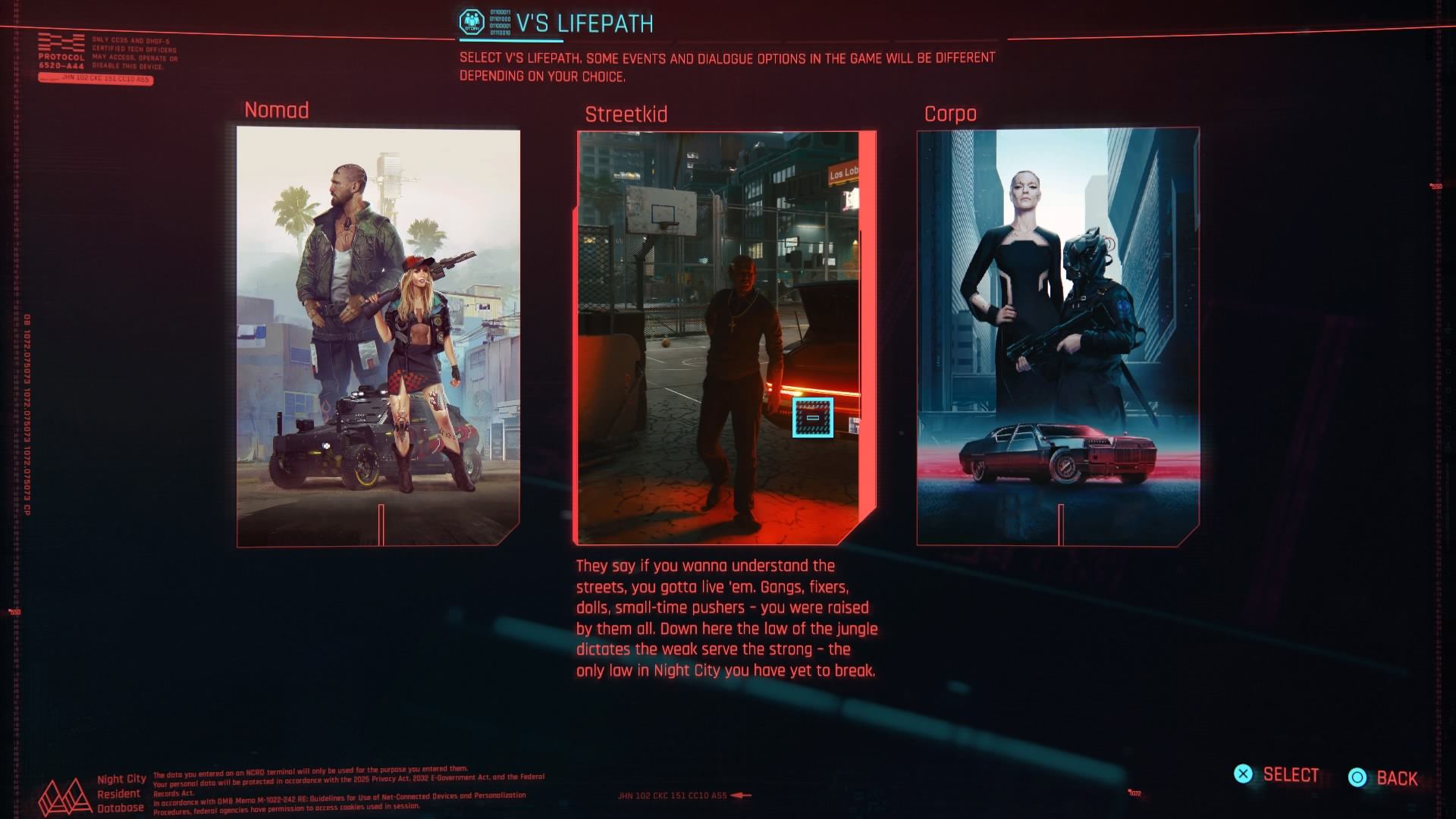
I would’ve liked to see Lifepath choices take a more prominent role in the game, however the differences really just add to extra dialogue options rather than an actual benefit or detriment as promised in Night City Wire. The Badlands areas feel a little underutilized and it seems like something that’s been tacked as an aside. I enjoyed the Badlands mission in the main quest line (and everything to do with Panam Palmer), but other than that, it’s a whole lot of nothing. While I do understand the main draw is Night City, the outside world is also part of the ecosystem and I look forward to more content from this area in future content.
As we progress to Act Two, there’s this subtle baton hand off that the original tabletop RPG hands off to the game counterpart. Almost like a nod on how electronic gaming has come throughout the years. When back in the 80’s, there were only pixels and 8-bit sounds to a simulated reality where a world has been created and fully realized. That is mostly seen with how Johnny Silverhand’s character plays out throughout the game, just like Keanu Reeves who is close to 60 at this point, passing the torch to the 20 and 30 something gamers who are en route to becoming legends themselves.

When you actually get to Act Two and the city opens all its doors to you, try to take it in slowly. Don’t get lost in the endless fetch quests and getting the mainline quest out of the way. Sit and relax a bit. When being chauffeured, look out the window on its different boroughs and city spaces. When walking through a marketplace, just stand there and take in the sounds and the sights. Appreciate how languages are quickly translated by your language mod and how every single character, person, and item brings this entire urban jungle to life. There is a masterpiece within this buggy mess, it’s just not too obvious yet, especially on the base consoles like the PS4.
What We Liked
- Fully immersive experience seamlessly merging cutscenes and gameplay.
- Impressive storytelling, as expected from CD Projekt Red.
- The Braindance Editor is something that has to be seen to be believed.
- Combat and exploration are fully integrated into Night City’s ecosystem, with usage of hacking and cyberware giving the world its unique features.
What We Didn’t Like
- Base PS4 experience is shoddy, riddled with bugs and grainy visuals.
- Full PS5 experience on hold until sometime in 2021.
- Melee combat is overpowered but has janky controls.
- While convenient, crafting and perk mechanics seem to be lifted from The Witcher 3.
- Lifepath choices are limited and mostly relegated to flavor text.
- Badlands are underutilized and hopefully more is added to this in the future.
Verdict: Wait For It

In an ironic twist of fate, Cyberpunk 2077 exhibited what is ongoing in their dystopian world in our current reality by showing the disparity of social classes with how they launched their product. Those who are fortunate enough to upgrade to a high end PC or acquire a current new-gen console have been able to fully experience what has been relentlessly advertised by its marketing machine, fulfilling a promise of a fully immersive experience. If you got the hardware for it, Cyberpunk will be utterly fantastic for you. There will still be a few hitches here and there, but you’ll learn to live with it.
However, for everyone else who is playing with a base console (PS4 / Xbox One) from last gen, you were unfortunately not given what was advertised, but instead a gauntlet of glitches of varying degrees. For a game that’s been advertised and promised for last generation, it is unacceptable to receive an unfinished product more akin to a beta or early access version. If you have the base consoles, prepare for a bad time. The PS5 and Xbox Series X versions should fare better though.
Though needless to say, most previews and streams that have sang the game’s praises had the hardware as an entry fee to Night City, while everyone else experienced Night City for the rough and edgy dystopia that it actually represented. If you haven’t bought a copy and are planning to play the game for the base PS4, I suggest waiting until a robust patch to alleviate many of the bugs that plague this game. Else, wait for your current new gen console to at least get a feel of what the game has to offer. At the time of this article’s publishing, a new patch was made available for the PS4 and Xbox One to fix some of the issues. So far, it’s only made my PS4 experience far worse.
Cyberpunk 2077 is a technical marvel with features that really boast what has been advertised and I can’t wait for the PS5 upgrade to be released to fully realize that promise. Even at the present, the PS4 port to the PS5 surprises me to no end but sometimes I confuse the game with the performance of the console and at varying degrees over-compliment one or the other.
The wait will be worth it for some of you, but I empathize with the squandered goodwill because of an incomplete launch. Objectively, having been through the frustration of the PS4’s lackluster product and then being shown the true potential of the game through the PS5; there’s a level of disparity and dissonance on my part as a critic.
To say that the game is terrible because of your experience with the PS4 is not doing the actual game design justice. On the other hand, saying that the game is perfect because of your experience with a high-end PC is not showing any respect for the users who have missed out because of lack of access to better hardware. To be fair is to show both sides of the story, and unfortunately, most of us will have to wait or ultimately, walk away.
Sadly, the issue here really lies in the fact that the state of the console release was hidden from everyone, as all initial reviews were made especially for the PC version which was capable of running it the best. This led to a lot of post-launch backlash that, while in some cases extreme, was justified to a certain point due to the deception.
Again, there’s a game in there, and it could be the masterpiece that was promised. For some, it already is, but for most, the wait will be excruciating. Until the problems are fixed and the bugs squashed, it would be sound advice to dive into the neon lights of Night City when it is ready for you. You deserve to play it the way it was designed and meant to be experienced.
*Cyberpunk 2077 was reviewed on a PS4 and PS5 via a review code provided by the publishers.








